
High-Density Interconnect (HDI) Printed Circuit Boards are a revolutionary advancement in electronics. They enable manufacturers to pack more components into smaller spaces, paving the way for powerful and compact devices. Why is this important? HDI technology is a game-changer in meeting the demands of modern electronics for speed, efficiency, and miniaturization.
HDI PCBs are designed to address the increasing demand for smaller gadgets without compromising on functionality or performance. By enabling high component density and advanced interconnections, HDI PCBs provide a foundation for the next generation of electronics.
From Standard PCBs to High-Density Interconnects
Traditional PCBs had limitations in density and performance. The demand for smaller, faster, and more efficient devices led to the evolution of HDI PCBs. These advancements were fueled by breakthroughs in manufacturing technologies, allowing more intricate and compact designs.
Key Milestones in HDI PCB Development
1. Introduction of microvias, enabling precise interconnections.
2. Advanced laser drilling techniques that improved accuracy and efficiency.
3. Adoption of any-layer PCB designs, making intricate multilayer configurations possible.
4. Integration of advanced materials to enhance thermal and electrical properties
Microvias, tiny drilled holes, allow for inter-layer connectivity with unmatched precision. They’re crucial for HDI’s compact designs, enabling more efficient use of board space and enhanced signal routing.
HDI PCBs minimize unused space, enabling designs that are smaller yet more capable. This efficiency supports the growing demand for portable and multifunctional devices.
With options like 1+N+1 and any-layer structures, HDI PCBs support intricate circuitry without compromising performance. These advanced structures also improve electrical characteristics, reducing signal interference and enhancing reliability.
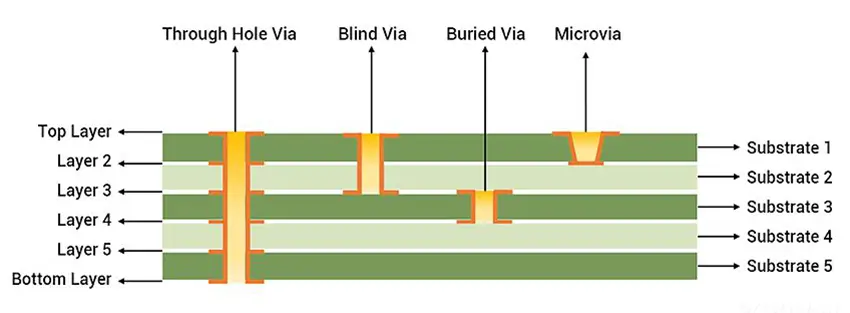
This design includes a single build-up of high-density layers on either side of a core. It is a cost-effective solution suitable for simpler designs.
In this configuration, every layer can connect to any other layer, ideal for complex designs. This type is commonly used in high-performance devices like smartphones and advanced medical equipment.
The choice depends on the application. For example, 1+N+1 is ideal for budget-conscious projects, while any-layer designs are preferred for high-density and high-speed requirements. The specific needs of a project dictate the optimal configuration.
Devices like smartphones rely on HDI PCBs to balance size with capability. This technology allows manufacturers to create thinner and lighter products without compromising on features.
HDI’s compact design minimizes signal loss and improves communication speeds. The reduced distances between components enhance the overall efficiency and reliability of data transmission.
Built to withstand thermal and mechanical stresses, HDI PCBs are ideal for critical applications. Their robust design ensures long-lasting performance, even in extreme conditions such as aerospace or automotive environments.
HDI PCBs’ optimized design contributes to better power management, reducing energy consumption in devices. This makes them a sustainable choice for eco-conscious industries.
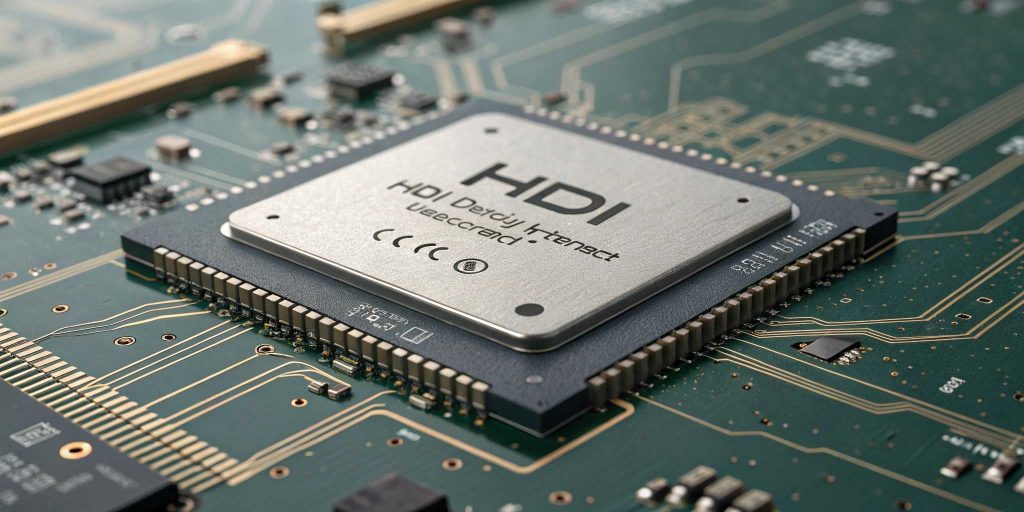
Smartphones use HDI PCBs for their compact yet powerful design. By integrating advanced circuits into smaller spaces, these boards enable features like high-speed processing and enhanced battery life.
The compactness and efficiency of HDI PCBs make them ideal for IoT gadgets. From smart home devices to wearable tech, HDI technology supports seamless connectivity and reliable performance.
From wearable devices to imaging equipment, HDI PCBs enable breakthroughs in healthcare technology. Their precision and reliability are critical in life-saving medical devices.
HDI’s reliability and performance suit demanding environments like automotive electronics and aerospace systems. Applications range from advanced driver-assistance systems (ADAS) to satellite communications.
Plan layer arrangements to maximize efficiency and signal integrity. A well-thought-out stack-up minimizes signal distortion and enhances thermal management.
Use advanced routing software to navigate the complexities of HDI designs. Techniques like blind and buried vias can help manage space constraints effectively.
Select materials based on thermal performance, dielectric properties, and cost-effectiveness. High-quality laminates and copper foils are essential for achieving desired electrical and thermal characteristics.
Invest in thorough prototyping and simulation to validate your design before mass production. This helps identify potential issues early and ensures the final product meets performance expectations.
Laser drilling for microvias
Plating and deposition to ensure electrical connectivity
Lamination of multiple layers to create complex structures
Solder mask application for protection and identification
Cutting-edge tools like laser drills enable the precision required for HDI designs. Innovations in plating techniques enhance conductivity and durability.
Ensure reliability through stringent testing like electrical continuity and thermal cycling. Automated optical inspection (AOI) is also used to detect defects early.

| Specifications | PCB Capabilities |
| PCB Layers | 4 ~34 layers |
| High-Density Layers | Up to 18 layers |
| Delivery Time | 1 day to 3 weeks |
| Stackup | 1+N+1, 2+N+2, 3+N+3, 4+N+4 |
| PCB Via | Blind via, Buried via, Staggered via, Stacked via, Skip via |
| Minimum Laser Drill Diameter | 0.075mm |
| Final PCB Thickness | 0.15mm |
| Minimum Trace Width/Space | Flex/rigid-flex PCBs: 1.6mil/1.6mil Rigid PCBs: 3mil/3mil |
| Production Capability | 3000m² per day |
| Copper Thickness | 100μm to 125μm |
| Impedance Control | 90Ω ~100Ω |
| Technical Feature | 90Ω & 100Ω Differential impedance, thick cooper |
| Silkscreen | White, Black, Red,etc. |
| Soldermask | Green, Blue, Purple, White, Black, Pink,Orange |
| Surface finish | OSP, HASL, Lead Free HASL,ENIG,Immersion Tin,Immersion silver, Hard gold plating,etc. |
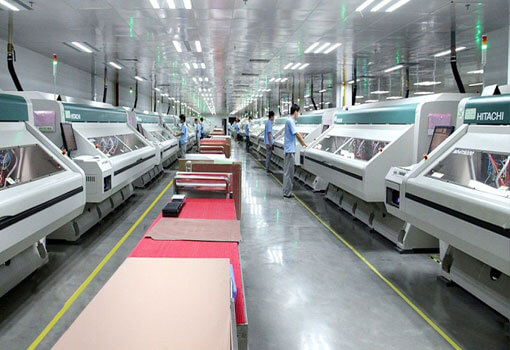
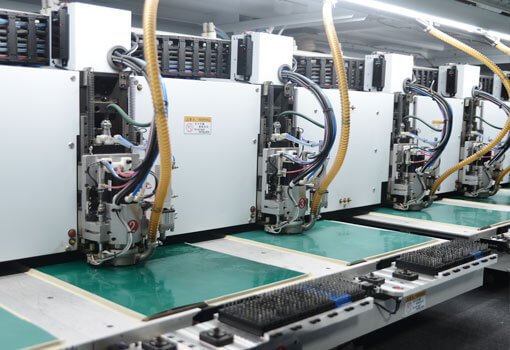
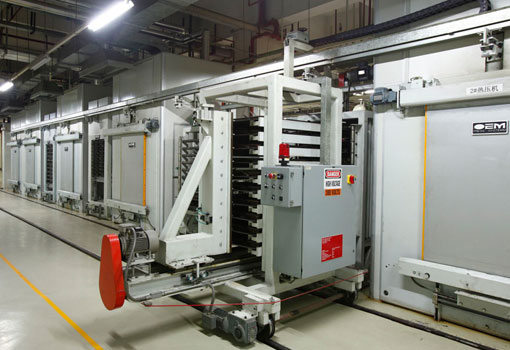
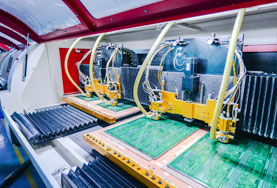
Choosing onestoppcb for your HDI PCB needs comes with numerous advantages that set us apart in the competitive electronics manufacturing industry:
Speed and Efficiency: Our streamlined manufacturing processes ensure rapid prototyping and on-time delivery, helping you maintain tight project schedules without compromise.
High Precision and Quality: Equipped with state-of-the-art facilities, we specialize in crafting high-density interconnect (HDI) PCBs with unparalleled accuracy and reliability, perfect for sophisticated and compact electronic designs.
Diverse Customization Options: Whether you need multi-layer, blind and buried vias, or microvia solutions, we offer a wide range of configurations to meet your specific requirements.
Global Trust and Expertise: With extensive experience exporting to the U.S., Europe, Vietnam, and South America, we understand and adhere to international standards, ensuring consistent quality every time.
Personalized Support: Our dedicated team of engineers and account managers work closely with you, providing expert guidance and responsive service to simplify your supply chain.
Choosing onestoppcb means partnering with a factory that values speed, diversity, and exceptional quality, ensuring your success in every project.
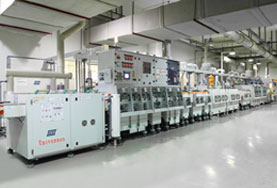

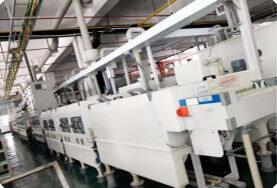

here are more pictures of our factory’s equipment display in our company profile, please click here.
● IATF 16949:2016
● ISO 9001:2015
● ISO14001:2015
● ISO13485:2016
● UL
Furthermore, all our products adhere to the IPC & ROHS Standards. It is our continuous endeavor to produce premium quality PCB products.

We understand you may have questions about our products and services. Here, we provide answers to common queries regarding our HDI PCB.
High-density interconnect, or HDI, circuit boards are printed circuit boards with a higher wiring density per unit area than traditional printed circuit boards.
HDI PCBs differ significantly from standard boards by incorporating multiple layers, micro-vias under 0.008 inches in diameter, and specialized via-in-pad processes. They often include blind, buried, and stacked vias, allowing exceptionally dense circuitry where traces and spaces both measure below 0.005 inches. This combination results in superior miniaturization and performance, making HDI PCBs ideal for mission-critical applications.
Your Trusted HDI PCB Manufacturer Since 2011
onestoppcb brings the advanced capabilities and decades of expertise required to handle all your fabrication and manufacturing needs, including high-density interconnect (HDI) PCBs. With HDI boards gaining increasing popularity across diverse sectors—such as medical, military, and aerospace—we stand ready to deliver the reliability and performance demanded by these critical industries.
PCBs built with high-density interconnect (HDI) technology generally occupy a smaller footprint, as they fit more components into a tighter space. By incorporating blind, buried, and micro vias, along with via-in-pad placements and very fine trace widths, HDI designs efficiently pack a higher component density onto a smaller board.
HDI PCBs deliver substantial advantages. They enable a more compact device footprint and can enhance overall electrical performance, supporting higher data transmission speeds. Moreover, they accommodate more input/output connections within a smaller area.
At onestoppcb, our 4-layer HDI manufacturing process closely resembles standard PCB production, with the primary distinction being the order in which holes are drilled. We start by mechanically drilling buried vias between layers 2 and 3, then move on to the through-holes from layers 1 to 4. Finally, we form blind vias between layers 1-2 and 4-3. This carefully sequenced approach ensures optimal board integrity and reliable signal performance.
At onestoppcb, we use a combination of polymer resin (dielectric)—with or without fillers—reinforcement materials, and metal foil as the primary building blocks of our circuit boards. In a typical layer construction, alternating layers of dielectric and metal foil are stacked to achieve the desired thickness and electrical performance. This process ensures both reliable functionality and structural integrity for a wide range of applications.
We’ve found that PCB dimensions and shape play a crucial role in determining cost. Larger boards require additional materials and take longer to produce, driving up expenses. Meanwhile, PCBs with unusual shapes may need specialized tooling or more complex processes, which can also contribute to higher costs
Simplify your PCB sourcing—get in touch now for high-quality products and efficient service!

ONESTOPPCB
1-4/F Property Office Building, ZhengFeng North Road, Shenzhen, China 518103
Phone: +86-0755-36309132
1-4/F Property Office Building, ZhengFeng North Road, Shenzhen, China 518103